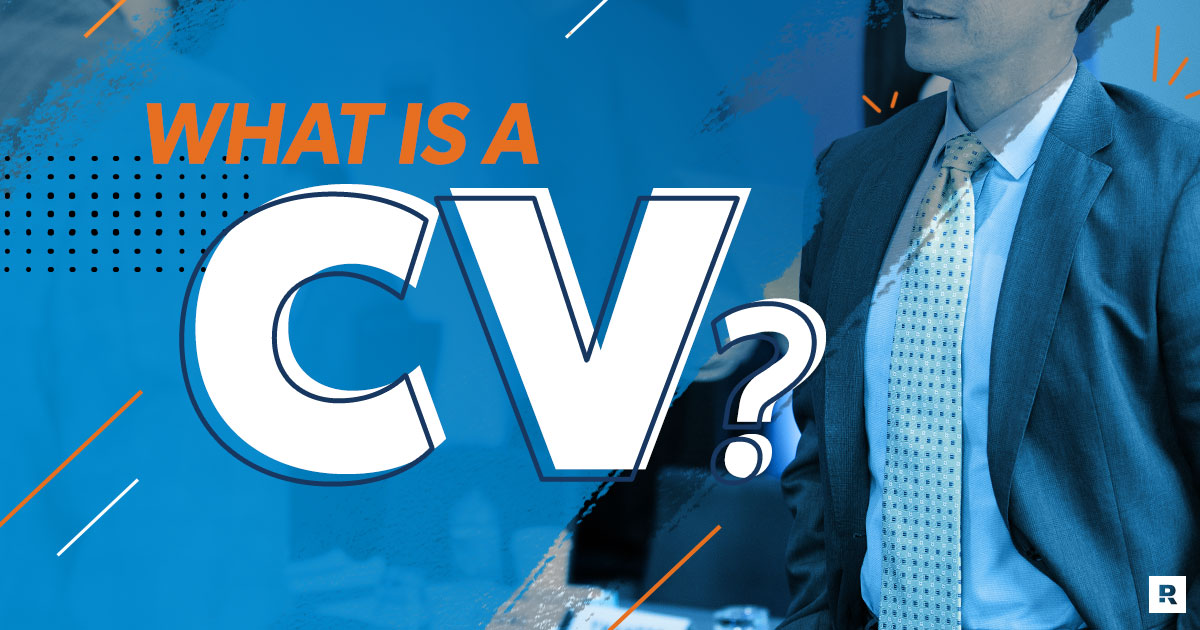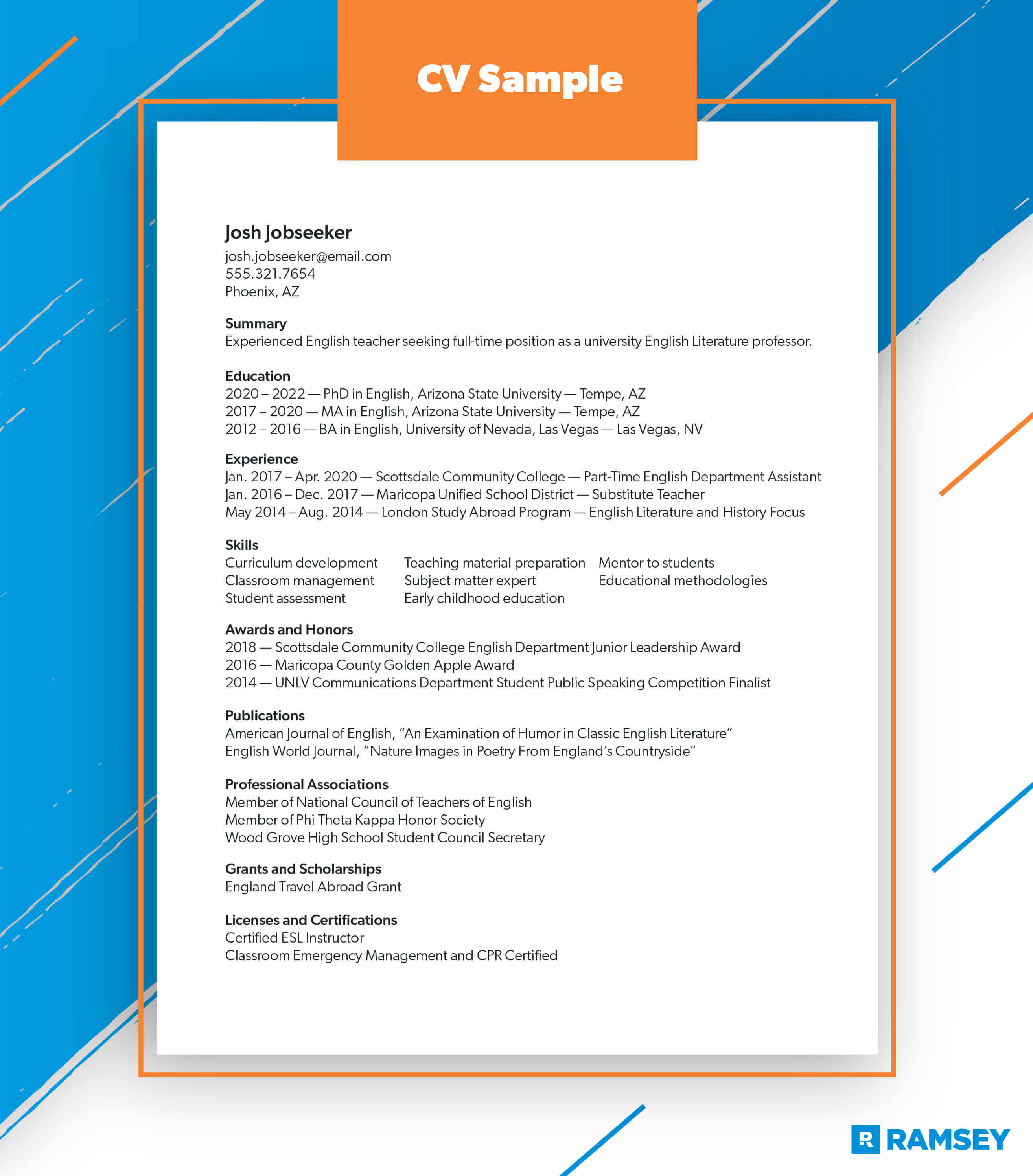What Is a Curriculum Vitae (CV) and How Do You Write One?
7 Min Read | Mar 21, 2025

Key Takeaways
· A curriculum vitae (CV) is a detailed document that outlines your academic and professional accomplishments.
· Unlike a resumé, a CV provides a comprehensive record of education, research and work history. It can also be longer than a resumé, which is normally limited to one page.
· CVs are commonly used for academic, research, and international job applications.
· A CV typically includes sections on education, experience, publications and professional affiliations.
Resumés, cover letters, CVs . . . If you’re in the thick of job searching, you may have come across an unfamiliar document employers want you to send along with your job application: a curriculum vitae, also known as a CV. But what is a CV, and how do you write one? And how is a CV different from a resumé?
Get expert money advice to reach your money goals faster!
There are some important differences between this academic document and a professional resumé, and I want you to learn how to write a CV so you can stand out in your job search.
What Is a CV?
CV is short for the Latin phrase curriculum vitae, which means “course of life.” But don’t worry—creating a CV doesn’t mean you have to write your resumé in another language. Unlike a resumé, which combines your work experience, skills, mission, passion and purpose, a CV is a formal document that focuses on school credentials.
A CV outlines your work history as well as a longer record of your education, certifications, awards and achievements, research projects, published articles or books you’ve written, and professional memberships over the course of your life.
CVs are normally used for job applications in higher education, like for professors or research assistants. Sometimes CVs are used for high-level roles in law, finance and business, but that depends on the company. They’re also used to apply for grants and fellowships. (And just in case you’re reading this article from across the pond, CVs are the normal document for job applications in the U.K. and Europe.)
What’s the Difference Between a CV and a Resumé?
While CVs and resumés are both used to show your work history and get you an interview, they have a few key differences. The main thing to remember is that CVs show a detailed outline of your professional and academic life. They’re known as static documents because they only change if you add more information and experience to them. Resumés focus on your work experience, and they can be updated and tweaked to fit each job you apply for.
Here are a few more differences between CVs and resumés.
|
CVs |
Resumés |
|
Focus on academic achievements and research, degrees, published articles and other awards and recognition |
Focus on professional work history and are customized for the job application |
|
Can be multiple pages long to cover your school and work history |
It’s best to keep resumés to about a page in length |
|
Mostly focus on your school experience |
Focus on your work experience |
|
List educational achievements first |
Lead with your most recent work experience |
Oh, and one more thing: CVs and resumés normally don’t include much personal information, like details about your hobbies or family life. But CVs should highlight volunteer work, special projects and relevant skills for the job or school opportunity you’re applying for.
Your CV is a written record of what you’re good at and where you’ve applied that knowledge in the education world, so don’t be afraid to share the most important details. You want to stand out!
How Do I Know When to Use a CV?
I’ve got good news: No matter where you’re applying for jobs or school opportunities (like graduate school or a teaching position), the employer or admissions office should make it clear if they prefer a resumé or a CV. (A good rule of thumb is academic institutions and European companies will ask for a CV, and most American businesses will ask for a resumé.)
If it isn’t obvious which one you need to use based on the job posting, go ahead and contact the hiring manager to ask which document they’d prefer. Before you get started, take some time to research free online templates you can use to model your CV. You’ll be including a lot of information here, so make sure it’s well organized with a professional layout and includes a few sentences about your academic focus and career goals.
How to Write a CV
I know curriculum vitae sounds like a fancy and complicated name, but writing one doesn’t have to be hard. In fact, creating a CV is straightforward if you have your work and school experience jotted down somewhere (like on a resumé) or at least memorized in your head. Here a few extra tips to keep in mind as you learn how to write a CV.
1. Include contact information.
This should go without saying, but always include your contact information on your CV. Add your name, phone number, email address, city, state and zip code.
2. List your academic experience from most recent to earliest.
This section should include any higher education programs, university degrees and high school experience. Include the school’s name, degree completed, GPA and the years you attended.
3. Include professional experience.
Beginning with your most recent job, list the name of the company, your job title, and the dates you were employed, then repeat for your previous jobs. Add a few power words to describe your responsibilities (this will give your CV some juice!). And if you can, include percentages or dollar amounts to show the results you achieved. Trust me, hiring managers love that.
 4. Add a section for special skills, qualifications and certifications.
4. Add a section for special skills, qualifications and certifications.
Did you take an IT certification course over the summer or a get a qualification for project management? Including extra training or skill development will be a good boost to your CV—and show your initiative to learn new things.
5. List any honors and awards you’ve received.
This includes university dean’s list recognition, scholarships and grants, honor roll, graduate distinctions, leadership awards or community awards. I’m giving you permission to brag here. Let your accomplishments shine!
6. Include the titles of your articles or studies and where they’ve been published.
Because CVs are used in academic settings, if you’re writing one, there’s a good chance you’ve also had research or articles published. Including this work on your CV gives you credibility, so go ahead and list it all.
7. Add professional associations and affiliations like clubs and memberships.
Were you a founding member of the campus advertising society? What about a leader in your church? You’ll want to add your leadership experience and relevant volunteer work or memberships to this section. This is also a good place to include the names of your mentors from those organizations.
8. Review and edit for accuracy.
Like any other professional document, you need to double- and triple-check your spelling, contact info and dates for accuracy. Use spell-check, ask a friend to review the final document, and even print it out and look at it one more time yourself.
Take the Next Step in Your Job Search
Remember, just like a resumé, your CV should represent you as the best candidate for the job or opportunity you’re applying for. After all, this piece of paper is what’s going to get you an interview.
Now that you’ve got an awesome CV ready to go, it’s time to take the next step in your job interview prep. Check out my free Interview Guide. It’ll help you prepare to go into your interview with confidence, learn the most common interview questions and answers, and create a strong first impression with the hiring manager or admissions professional. I know you can get your dream career, and with a strong CV and these interview tips, you’re well on your way.


